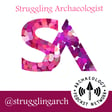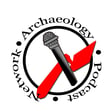
The Archaeology of Alcohol: The Ancient Ales Edition! - Episode 21
I suggest you sit back, pop open a cold one, get a little toasty, and enjoy this generally informative fun-times podcast.
So, our ancestors have been making alcoholic concoctions for thousands of years, and thanks to science and archaeology we now have the ability to reconstruct the recipes to some of these awesome drinks. I thought it would be interesting to find out about how alcohol has evolved from its early days to what we are familiar with today, so that’s what today’s podcast is about!
I had a lot of fun recording this episode because it also gave me an excuse to drink some delicious beer, so thanks Beer Gods! In the podcast you’ll learn about:
How Dogfish Head collaborated with biomolecular archaeologist Patrick McGovern, director of the archaeology project for cuisine, fermented beverages and health at the University of Pennsylvania museum, to create their line of ancient ales based on reconstructed recipes from archaeological discoveries around the world!A background on the origins of drinking and producing alcohol, and how drinking helped civilizations develop around the world!How some monks in the Middle Ages started changing the face of ale and created some of the first modern beers. Then, how Germany regulated the crap out of it!Finally, on a non-alcohol related front, I decided to start a book club for people who enjoy books about history, like me! Our first read is a historical fiction novel called All the Light We Cannot See by Anthony Doerr, a WWII story about a young blind French girl and a German boy whose lives intersect in the midst of the devastation of war. Get your hands on the book and give it a read, then we’ll discuss it on the social medias and youtubes! For more books I’m thinking about reading for the club, check out my goodreads bookshelf called struggling arch book club. Feel free to send me suggestions too, I’d love to hear them!
So that’s it, enjoy the episode and enjoy some great beer while listening. Here are some links from this podcast that you may want to visit-
History of Trappist Monks and Beer Here and Here





